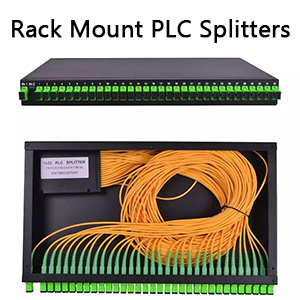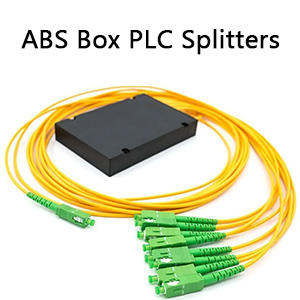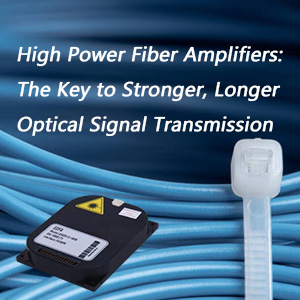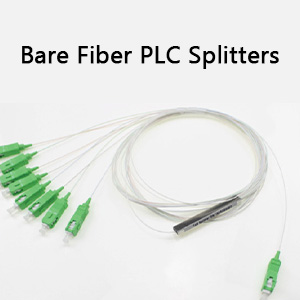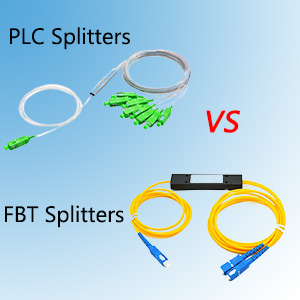In the long-distance data transmission of optical fiber, the optical amplifier is irreplaceable. It can directly amplify the optical signal without converting the signal into an electrical signal for amplification, which is also a major advantage. In addition, among the various optical amplifiers that can operate long-distance optical communication amplification, EDFA Optical Amplifiers are the most commonly used one, and it is also the part that new fiber optic communication friends want to know most.
EDFA Optical Amplifier(Boosting Optical Signals More Effectively)
When being transmitted over long distances, the optical signal has to be amplified many times in between owing to the signal loss from fiber attenuation, connectivity losses, fiber splicing losses, etc. Before an optical amplifier is invented, the optical signal has to be first converted into an electrical signal, amplified, and then converted back to an optical signal again. The process is very complicated and expensive. To overcome such a problem, the optical amplifier has since been invented to amplify signals directly so that this process is significantly cheaper and started a fiber optic revolution.
There are several types of fiber optic amplifiers: semiconductor optical amplifier(SOA), fiber Raman and Brillouin amplifier, and erbium-doped fiber amplifier (EDFA). Among these optical amplifier types, EDFA is the most widely deployed WDM system. It uses the erbium-doped fiber as an optical amplification medium to directly enhance the signals. Nowadays, EDFA is commonly used to compensate for fiber loss in long-haul optical communication. The most important characteristic is that it can amplify multiple optical signals simultaneously and easily combined with WDM technology. Generally, it is used in the C band and L band, nearly in the range from 1530 to 1565 nm. But it also should be noted that EDFAs cannot amplify wavelengths shorter than 1525 nm.

How Does EDFA Work?
The basic structure of an EDFA consists of a length of Erbium-doped fiber (EDF), a pump laser, and a WDM combiner. The WDM combiner is for combining the signal and pump wavelength so that they can propagate simultaneously through the EDF. The lower picture shows a more detailed schematic diagram of EDFA.
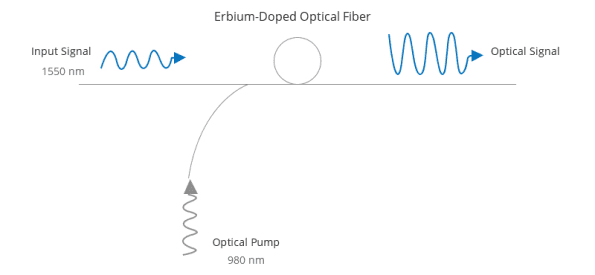
The optical signal, such as a 1550nm signal, enters an EDFA amplifier from the input. The 1550nm signal is combined with a 980nm pump laser with a WDM device—the signal and the pump laser pass through a length of fiber doped with Erbium ions. As discussed above, EDFA uses the erbium-doped fiber as an optical amplification medium. The 1550nm signal is amplified through interaction with the doping Erbium ions. This action amplifies a weak optical signal to a higher power, effecting a boost in signal strength.
In summary, an EDFA works by using stimulated emission in an erbium-doped fiber to amplify optical signals. The pump laser excites erbium ions in the fiber, and when incoming signals stimulate these ions, additional photons are emitted, amplifying the original signals. This process is crucial in long-distance optical communication systems to compensate for signal attenuation.
Three EDFA Amplifier Types for DWDM Connectivity

Booster Amplifier
A booster amplifier operates at the transmission side of the link, designed to amplify the signal channels exiting the transmitter to the level required for launching into the fiber link. It’s not always required in single-channel links but is an essential part of the DWDM link where the multiplexer attenuates the signal channels. It has high input power, high output power, and medium optical gain. The common types are 20dBm Output C-band 40 Channels 26dB Gain Booster EDFA, 16dBm Output C-band 40 Channels 14dB Gain Booster EDFA and so on.
In-line Amplifier
An in-line amplifier is generally set at intermediate points along the transmission link in a DWDM link to overcome fiber transmission and other distribution losses. The in-line EDFA is designed for optical amplification between two network nodes on the main optical link. In-line EDFAs are placed every 80-100 km to ensure that the optical signal level remains above the noise floor. It features medium to low input power, high output power, high optical gain, and a low noise figure.
Pre-amplifier
A pre-amplifier EDFA operates at the receiving end of a DWDM link. The pre-amplifier is used to compensate for losses in a demultiplexer near the optical receiver. Placed before the receiver end of the DWDM link, pre-amplifier EDFA works to enhance the signal level before the photodetection takes place in an ultra-long haul system, hence improving the receiver sensitivity. It has relatively low input power, medium output power, and medium gain.
What is the EDFA Gain and EDFA Noise Figure?
In practical terms, both gain and noise figures are critical parameters in the design and optimization of optical communication systems, ensuring efficient signal amplification with minimal degradation of the signal quality.
EDFA Gain
The gain of an EDFA represents the amount by which it amplifies the incoming optical signal. It is typically measured in decibels (dB) and is the ratio of the output optical power to the input optical power, expressed in dB. The gain is essential for ensuring that the optical signal has sufficient power to travel over long distances in a fiber-optic communication system without significant signal degradation.
The gain of an EDFA is achieved through the process of stimulated emission, where erbium ions in the fiber are excited to a higher energy level and then coherently release photons, amplifying the signal. The higher the gain, the more effectively the optical signal is amplified.
EDFA Noise Figure
The noise figure of an EDFA is a measure of how much the amplifier contributes to the overall noise in the optical signal. It is expressed in decibels (dB) and represents the degradation in signal-to-noise ratio caused by the amplifier. As the optical signal passes through the EDFA, some additional noise is introduced, impacting the quality of the signal. The lower the noise figure, the better the amplifier performs in terms of minimizing additional noise.
EDFA noise figure is particularly important in optical communication systems where maintaining a high signal-to-noise ratio is crucial for reliable and high-quality signal transmission.
Advantages and Considerations of EDFA
Nowadays, EDFA optical amplifier rises as a preferable option for signal amplification method for DWDM systems, owing to its low noise and insensitive to signal polarization. If you are troubled about choosing the amplifier, the advantages and considerations will give you clues.
Advantages
- EDFA has high pump power utilization (>50%).
- EDFA directly and simultaneously amplifies a wide wavelength band (>80nm) in the 1550nm region, with a relatively flat gain.
- Flatness can be improved by gain-flattening optical filters.
- Gain over 50 dB.
- EDFA features a low-noise figure suitable for long-haul applications.
- EDFA deployment is relatively easier to realize and more affordable compared with other signal amplification methods.
Considerations
- 1. Wavelength Matching: Ensure that the selected EDFA matches the wavelength range used in the DWDM system. EDFA typically operates in the C-band (1530-1565 nm) and L-band (1565-1625 nm).
- 2. Saturation Power: EDFA has a saturation power limit, where the gain tends to saturate at higher power levels. System designers should consider this saturation effect to ensure stable system performance.
- 3. System Monitoring: Integration of monitoring and management systems is essential for real-time performance monitoring of the EDFA. This aids in quick identification and resolution of potential issues.
- 4. Preventing Crosstalk: In high-density DWDM systems, attention should be given to preventing crosstalk between wavelengths. Proper wavelength planning and the use of suitable wavelength division multiplexers are crucial.
Summarize
If you’re looking to buy EDFA Optical Amplifiers for sale, FiberLife is your reliable manufacturer and supplier of high-quality amplifiers.
Headquartered in Hong Kong, FiberLife also sells fiber optic cables. They work with various clients worldwide to meet their needs. Get in touch with them today to buy optical amplifiers of all types.

